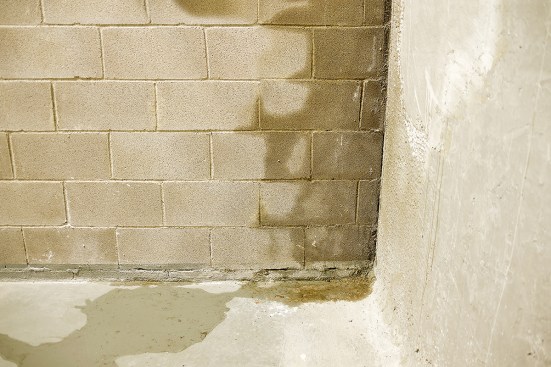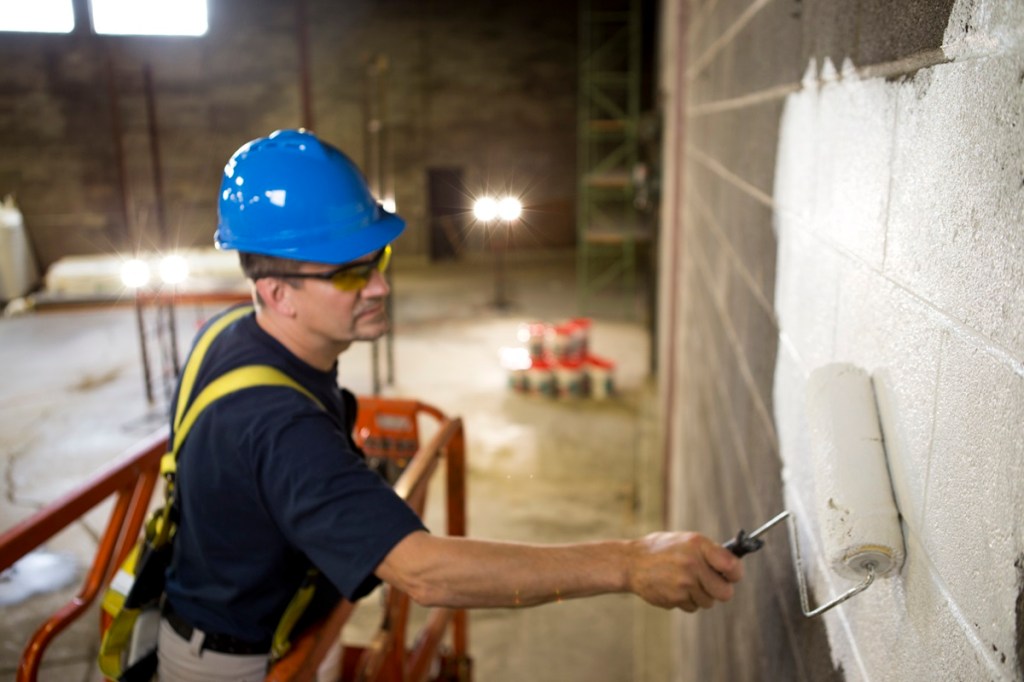With land scarcity pushing development into wetter, risk-prone areas, effective waterproofing has never been more critical. From efflorescence to full-blown structural damage, water infiltration can compromise both the performance and the aesthetics of masonry structures.
A thoughtful, code-compliant approach to waterproofing is essential — and starts with understanding both materials and methods.
Know What You’re Up Against
Today’s builders are increasingly encountering projects on high-water-table sites or those redeveloped from wetlands.
“You’re not always building on ideal ground anymore,” says Michele Neary, director of product management at Sika Corporation for DRYLOK, ZAR, and Sika ProSelect brands.
Combine that with porous masonry units, thermal expansion, and poor detailing around penetrations, and you’ve got a recipe for water intrusion.
The consequences? Structural damage from freeze-thaw cycles, corroded rebar, mold, staining, higher maintenance costs, and a reduced building lifespan.

Waterproofer vs. Water Sealer
Not all coatings are created equal.
“A waterproofer must hold back hydrostatic pressure,” says Neary. “A water sealer doesn’t.”
Builders often mistake the two, applying a sealer where true waterproofing is needed.
Perm rating is another essential consideration. A perm rating below 1 indicates a true waterproofer, but some breathability is still needed to allow water vapor to escape, preventing trapped moisture and long-term damage.
Selecting the right waterproofing system depends on several variables:
- Location (above or below grade): Whether the masonry is installed above or below ground level significantly affects the waterproofing requirements, with below-grade applications typically requiring systems that can resist hydrostatic pressure.
- Exposure (wind-driven rain vs. hydrostatic pressure): The type and intensity of moisture exposure, such as heavy rainfall or constant groundwater pressure, determines whether a simple water-repellent or a full waterproofing membrane is necessary.
- Masonry type and porosity: Different materials like brick, block, and stone absorb water at varying rates, so understanding their porosity helps in selecting a product that effectively seals the surface.
- Aesthetic preferences: If the appearance of the finish matters—especially in visible areas—clear or tintable coatings may be preferred over thick, pigmented membranes.
Surface sealers may suffice for short-term protection above grade. For below-grade or highly exposed areas, fluid-applied or sheet membrane systems are better suited.
Fluid-applied products—typically rolled, sprayed, or brushed on—offer seamless coverage and are easier to apply around complex penetrations. Sheet membranes, while more durable, require careful seam detailing and may be less attractive above grade.
“In some cases, it makes sense to use both,” Neary says. “A fluid-applied product first, followed by a sheet membrane where backfill could damage the coating.”
Avoid These Costly Mistakes
Contractors often under-apply liquid coatings, treating them like paint.
“It has to enter the pores of the masonry,” says Neary.
Insufficient product, poor surface prep, using the wrong type of coating, and ignoring cracks are common missteps.
Builders should also avoid applying waterproofers in unsuitable conditions, such as when temperatures are too low or the surface is damp.
Innovations on the Horizon
Recent advances include clear waterproofers for aesthetic masonry finishes and time-release biocides that offer longer-lasting mold and mildew resistance.
“It’s like layers of protection that activate over time,” says Neary.
Builders are also using waterproofers in new ways. On fast-track construction schedules—particularly in multifamily and commercial projects—liquid-applied waterproofers are increasingly being used as temporary dry-in barriers. These coatings are sprayed directly onto exposed masonry walls, allowing interior work, such as drywall installation, to proceed without waiting for the building to be fully enclosed.
“This allows finishing crews to keep the job moving,” Neary says.
By blocking wind-driven rain during critical phases of construction, it reduces the chance of mold, mildew, and what’s commonly referred to as “sick building syndrome.”
“It’s changing how we think about above-grade moisture protection,” Neary says.
Learn more about choosing the right waterproofing or sealing solution for your next project.
